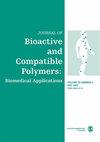不同浓度橙皮苷负载壳聚糖支架对大鼠骨再生模型的疗效评价
IF 2.1
4区 生物学
Q3 BIOTECHNOLOGY & APPLIED MICROBIOLOGY
引用次数: 0
摘要
骨移植被广泛用于改善骨愈合,但这种方法成本高,长期使用会产生感染等严重问题。为了解决这些问题,组织工程可以使用不同材料制成的支架作为支撑结构来促进骨愈合。本研究采用冷冻干燥技术制备了用于骨组织工程的三维壳聚糖(CS)骨支架。负载不同浓度的橙皮苷(Hes)可提高CS支架的效率。通过不同的力学和生物学试验对支架进行表征,以评价其性能。此外,通过大鼠股骨缺损模型评估支架对骨愈合的影响。结果表明,支架的孔隙率约为45 ~ 257µm, Hes对支架的机械强度有负向影响。同时,由于Hes的亲水性,其降解速率提高。组织学和ct扫描评价显示,与对照组和橙皮苷(0%,0.01%,0.1%)处理组相比,负载1%和10% he的支架组完全被新骨和胶原基质替代。与其他组相比,Runx2基因表达量显著提高了1%和10%。这些结果显示了该支架在成骨和骨愈合方面的积极作用,以及在临床试验中应用的可能性。本文章由计算机程序翻译,如有差异,请以英文原文为准。
Evaluation of the therapeutic effect of chitosan scaffolds loaded with the different concentrations of Hesperidin in bone regeneration in rat model
Bone grafts are widely used to improve bone healing but this method is costly and make some serious problems like infection in long-term use. To solve these problems, tissue engineering by using scaffolds made of different materials can be used as a supportive structure to enhance bone healing. In the current study, 3-D chitosan (CS) bone scaffold was developed by freeze-drying techniques for bone tissue engineering. The efficiency of the CS scaffold was improved by loading different concentrations of Hesperidin (Hes). Scaffolds were characterized by different mechanical and biological tests to evaluate their properties. In addition, the effect of scaffolds on bone healing was evaluated by a rat femur defect model. Results showed that the porosity of scaffolds was about 45–257 µm and Hes has a negative effect on the mechanical strength of scaffolds. Also, due to the hydrophilic properties of Hes, the degradation rate increased. Histological and CT-Scan evaluation showed that the treated groups which scaffold loaded with 1% and 10% of Hes were fully replaced by new bone and collagenous matrix compared to control and Hesperidin (0%, 0.01%, 0.1%) treated groups. The Runx2 gene expression was significantly increased by 1% and 10% compared to other groups. These results showed the positive effect of the fabricated scaffold on osteogenesis and bone healing and the possibility of using it in clinical trials.
求助全文
通过发布文献求助,成功后即可免费获取论文全文。
去求助
来源期刊

Journal of Bioactive and Compatible Polymers
工程技术-材料科学:生物材料
CiteScore
3.50
自引率
0.00%
发文量
27
审稿时长
2 months
期刊介绍:
The use and importance of biomedical polymers, especially in pharmacology, is growing rapidly. The Journal of Bioactive and Compatible Polymers is a fully peer-reviewed scholarly journal that provides biomedical polymer scientists and researchers with new information on important advances in this field. Examples of specific areas of interest to the journal include: polymeric drugs and drug design; polymeric functionalization and structures related to biological activity or compatibility; natural polymer modification to achieve specific biological activity or compatibility; enzyme modelling by polymers; membranes for biological use; liposome stabilization and cell modeling. This journal is a member of the Committee on Publication Ethics (COPE).
 求助内容:
求助内容: 应助结果提醒方式:
应助结果提醒方式:


